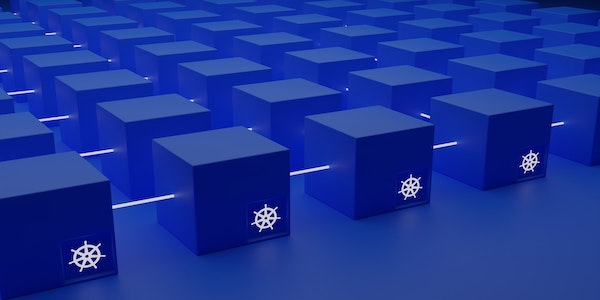This article was published as a part of the Data Science Blogathon.
Introduction

Web 3.0, the next generation of the internet, is a decentralized and interoperable platform that utilizes blockchain technology. APIs (Application Programming Interfaces) and microservices are crucial components of this platform, enabling communication and integration between different software systems and decentralized technologies. In this article, we will explore the benefits and challenges of using APIs and microservices in web 3.0, as well as their role in enabling the decentralized web and their potential future developments. We will also provide examples of real-world applications using these technologies and compare traditional APIs to web 3.0 APIs and microservices. Join us as we delve into the world of APIs and microservices in web 3.0.
What are APIs and Microservices in the Context of Web 3.0?
APIs (Application Programming Interfaces) and microservices are important components of web 3.0, the next generation of the internet focused on decentralization, interoperability, and the use of blockchain technology.
Here are some key points to consider when discussing APIs and microservices in the context of web 3.0:
- APIs allow different software systems to communicate with each other and exchange data. They act as a “bridge” between different systems, allowing them to interact and work together.
- Microservices are a way of designing and building modular, scalable, and easy-to-maintain software applications. Instead of building a large, monolithic application, a microservices architecture breaks the application down into smaller, independent components that can be developed, deployed, and managed independently.
- In web 3.0, APIs and microservices will play a crucial role in enabling interoperability and integration between different decentralized technologies and platforms.
- APIs and microservices will also be necessary for building decentralized applications (dApps) on blockchain platforms. dApps are decentralized software applications that run on a blockchain and can be accessed by users through a web browser or mobile app.
- Web 3.0 technologies, including APIs and microservices, will allow for the creation of new types of decentralized, interoperable, and user-controlled digital services and applications.
- Web 3.0 technologies will also enable the development of new business models and revenue streams and the creation of new opportunities for innovation and collaboration.
Benefits of Using APIs and Microservices in Web 3.0

There are several benefits to using APIs and microservices in the context of web 3.0:
- Interoperability: APIs and microservices allow different software systems to communicate with each other and exchange data, enabling interoperability between different technologies and platforms. This is particularly important in web 3.0, which is focused on decentralization and the ability to integrate with a wide range of decentralized technologies.
- Scalability: Microservices are designed to be modular and scalable, making it easier to add new features and capabilities to an application without requiring a complete rewrite. This allows businesses to respond to changing market conditions and customer needs more easily.
- Flexibility: By breaking an application into smaller, independent components, microservices allow developers to more easily modify and update individual parts of the application without affecting the entire system. This makes it easier to iterate and improve the application over time.
- Ease of maintenance: Microservices are easier to maintain because they are self-contained and can be developed, tested, and deployed independently. This makes fixing bugs and making updates easier without disrupting the entire application.
- Decentralization: Web 3.0 technologies, including APIs and microservices, will enable the development of decentralized applications (dApps) that run on blockchain platforms. dApps are decentralized software applications that users can access through a web browser or mobile app. They offer several benefits, including increased security, privacy, and user control.
- New business models: Web 3.0 technologies, including APIs and microservices, will enable the development of new business models and revenue streams, as well as the creation of new opportunities for innovation and collaboration.
Challenges and Limitations of Using APIs and Microservices in Web 3.0

There are several challenges and limitations to using APIs and microservices in the context of web 3.0:
- Complexity: Using APIs and microservices can add complexity to a software system, as it requires careful planning and management to ensure that different components are integrated and communicating effectively.
- Testing and debugging: Testing and debugging microservices can be more challenging because they are independent components that may have different dependencies and run in different environments. This can make it more difficult to identify and fix problems.
- Security: APIs and microservices can introduce new security risks as they allow different systems to communicate and exchange data. It is important to ensure that APIs and microservices are secure and properly authenticated to prevent unauthorized access or data leaks.
- Performance: The use of APIs and microservices can potentially impact the performance of an application, as each API call or microservice request requires additional processing time. This can be especially problematic if an application relies heavily on API calls or microservices.
- Integration: Integrating different APIs and microservices can be challenging, as it requires a deep understanding of how different systems work and how they can be connected. This can be time-consuming and require specialized knowledge and expertise.
- Compatibility: Not all APIs and microservices are compatible, and it may be necessary to modify or adapt them to make them work together. This can add additional complexity and time to the development process.
How APIs and Microservices Enable the Decentralized Web
APIs (Application Programming Interfaces) and microservices are key components of the decentralized web, also known as web 3.0. Here are some ways in which they enable the decentralized web:
- Interoperability: APIs and microservices allow different software systems to communicate with each other and exchange data, enabling interoperability between different technologies and platforms. This is particularly important in the decentralized web, which is focused on decentralization and the ability to integrate with a wide range of decentralized technologies.
- Decentralized applications (dApps): APIs and microservices are used to build decentralized applications (dApps) that run on blockchain platforms. dApps are decentralized software applications that users can access through a web browser or mobile app. They offer several benefits, including increased security, privacy, and user control.
- Integration with decentralized technologies: APIs and microservices can be used to integrate decentralized technologies with existing software systems, such as blockchain and distributed ledger systems. This enables the creation of new decentralized, interoperable, and user-controlled digital services and applications.
- Decentralized business models: Web 3.0 technologies, including APIs and microservices, will enable the development of new business models and revenue streams, as well as the creation of new opportunities for innovation and collaboration.
- Decentralized infrastructure: APIs and microservices can be used to build decentralized infrastructures, such as decentralized storage systems and decentralized computing networks, which are more secure, resilient, and scalable than centralized systems.
Overall, APIs and microservices are critical components of the decentralized web, as they enable the integration and interoperability of different decentralized technologies and platforms and enable the creation of new types of decentralized applications and services.
Best Practices for Implementing APIs and Microservices in a Web 3.0 Environment

Here are some best practices for implementing APIs and microservices in a web 3.0 environment:
- Plan carefully: Planning and designing your APIs and microservices before implementing them is essential. This includes identifying your application’s specific needs and requirements, the different components that will be required, and how they will work together.
- Use a modular design: Microservices are designed to be modular, meaning they are independent components that can be developed, tested, and deployed independently. This makes it easier to maintain and update your application over time.
- Use a standard API design: Use a standard API design, such as REST (Representational State Transfer), to ensure that your APIs are easy to use and understand. This will make it easier for developers to integrate with your APIs and for users to access your application.
- Use API documentation: Use API documentation to clearly explain how your APIs work and how to use them. This will make it easier for developers to understand and use your APIs.
- Test and debug thoroughly: It is essential to thoroughly test and debug your APIs and microservices to ensure they are working properly and performing optimally.
- Use appropriate security measures: Ensure appropriate security measures to protect your APIs and microservices from unauthorized access or data leaks. This includes authentication and encryption to secure data in transit and at rest.
- Monitor and optimize performance: Monitor the performance of your APIs and microservices and optimize them as needed to ensure that they are performing optimally.
Overall, it is important to plan carefully, design, and implement your APIs and microservices to ensure they are effective, scalable, and secure in a web 3.0 environment.
Future of APIs and Microservices in the Web 3.0 Ecosystem
The future of APIs and microservices in the web 3.0 ecosystem looks bright, as they will continue to play a crucial role in enabling interoperability and integration between different decentralized technologies and platforms. Here are some key trends and developments to watch for:
- The continued growth of decentralized applications (dApps): APIs and microservices will continue to be essential for building decentralized applications (dApps) that run on blockchain platforms. dApps are decentralized software applications that users can access through a web browser or mobile app. As the use of dApps grows, so will the demand for APIs and microservices to build and integrate them.
- Increased use of decentralized technologies: As decentralized technologies, such as blockchain and distributed ledger systems, become more widespread, the use of APIs and microservices to integrate these technologies with existing systems will also increase. This will enable the creation of new decentralized, interoperable, and user-controlled digital services and applications.
- Development of new business models: Web 3.0 technologies, including APIs and microservices, will enable the development of new business models and revenue streams, as well as the creation of new opportunities for innovation and collaboration.
- Decentralized infrastructure: APIs and microservices will be used to build decentralized infrastructures, such as decentralized storage systems and decentralized computing networks, which are more secure, resilient, and scalable than centralized systems.
Overall, the future of APIs and microservices in the web 3.0 ecosystem looks bright, as they will continue to play a key role in enabling the development and growth of decentralized technologies and applications.
Role of API Management in a Web 3.0 World
API management is the process of designing, publishing, documenting, and monitoring APIs to ensure that they are effective, secure, and easy to use. In a web 3.0 world, the role of API management will be even more important as APIs and microservices will play a crucial role in enabling interoperability and integration between different decentralized technologies and platforms.
Here are some key points to consider when discussing the role of API management in a web 3.0 world:
- Ensuring interoperability: API management will be important for ensuring that APIs and microservices are designed and implemented in a way that allows them to work effectively with a wide range of decentralized technologies and platforms.
- Ensuring security: API management will ensure that APIs and microservices are secure and protected from unauthorized access or data leaks. This will be particularly important in a decentralized environment where security risks may be greater.
- Ensuring scalability: API management will ensure that APIs and microservices are scalable and can handle large requests. This will be particularly important in a decentralized environment where many different users and applications may access the same APIs and microservices.
- Improving developer experience: API management will be important for improving the developer experience by providing clear documentation, examples, and support for developers using APIs and microservices.
- Monitoring and optimizing performance: API management will be important for monitoring the performance of APIs and microservices and optimizing them as needed to ensure that they are performing optimally.
Overall, API management will be an essential component of a web 3.0 ecosystem, as it will help to ensure that APIs and microservices are effective, secure, and easy to use in a decentralized environment.
Web 3.0 and the Rise of Microservice Architecture

Web 3.0 is the next internet generation focused on decentralization, interoperability, and blockchain technology. One key aspect of web 3.0 is the rise of microservice architecture, which is a way of designing and building modular, scalable, and easy-to-maintain software applications.
Here are some key points to consider when discussing the rise of microservice architecture in the context of web 3.0:
- Decentralization: Microservice architecture is well-suited to the decentralized web, as it allows for creating independent, modular components that can be developed, deployed, and managed independently. This makes integrating with a wide range of decentralized technologies and platforms easier.
- Interoperability: Microservice architecture allows different software systems to communicate with each other and exchange data, enabling interoperability between different technologies and platforms. This is particularly important in web 3.0, which is focused on decentralization and the ability to integrate with a wide range of decentralized technologies.
- Scalability: Microservices are designed to be scalable, making it easier to add new features and capabilities to an application without requiring a complete rewrite. This allows businesses to respond to changing market conditions and customer needs more easily.
- Ease of maintenance: Microservices are easier to maintain because they are self-contained and can be developed, tested, and deployed independently. This makes fixing bugs and making updates easier without disrupting the entire application.
Overall, the rise of microservice architecture in web 3.0 will be an essential trend to watch, as it will enable the development of decentralized, interoperable, and scalable applications and services that can be easily maintained and updated over time.
Real-world Examples of APIs and Microservices in Web 3.0 Applications
Many real-world examples of APIs and microservices are being used in web 3.0 applications, including decentralized applications (dApps) that run on blockchain platforms. Here are a few examples:
- Cryptocurrency exchanges: Many cryptocurrency exchanges use APIs and microservices to enable users to buy, sell, and trade different cryptocurrencies. APIs and microservices integrate with different blockchain platforms and connect users with different exchanges and marketplaces.
- Decentralized finance (DeFi) applications: DeFi applications, decentralized financial applications that run on blockchain platforms, often use APIs and microservices to integrate with different decentralized technologies and platforms. For example, a DeFi application might use an API to connect with a decentralized identity platform to verify user identities or a microservice to connect with a decentralized storage platform to store and retrieve data.
- Supply chain management applications: APIs and microservices can be used to build decentralized supply chain management applications that run on blockchain platforms. These applications can use APIs and microservices to connect with different supply chain partners and track goods’ movement through the supply chain.
- Gaming applications: APIs and microservices can be used to build decentralized gaming applications that run on blockchain platforms. These applications can use APIs and microservices to connect with gaming platforms and enable users to buy, sell, and trade in-game items and assets.
Overall, many real-world examples of APIs and microservices are being used in web 3.0 applications to enable interoperability and integration with different decentralized technologies and platforms.
Comparing Traditional APIs to Web 3.0 APIs and microservices
Traditional APIs and microservices enable communication and integration between different software systems, while web 3.0 APIs and microservices are specifically designed to enable interoperability and integration with decentralized technologies and platforms. Here are some key differences between traditional APIs and microservices and web 3.0 APIs and microservices:
- Focus on decentralization: Web 3.0 APIs and microservices are designed to enable interoperability and integration with decentralized technologies and platforms. In contrast, traditional APIs and microservices are not necessarily focused on decentralization.
- Use of blockchain technology: Web 3.0 APIs and microservices are often used to build decentralized applications (dApps) that run on blockchain platforms, while traditional APIs and microservices do not necessarily use blockchain technology.
- Decentralized business models: Web 3.0 technologies, including APIs and microservices, will enable the development of new business models and revenue streams that are decentralized and not reliant on traditional centralized organizations. Traditional APIs and microservices do not necessarily enable decentralized business models.
- User control and autonomy: Web 3.0 technologies, including APIs and microservices, will enable the development of decentralized, interoperable, and user-controlled digital services and applications. Traditional APIs and microservices do not necessarily enable this user control and autonomy level.
Overall, while traditional APIs and microservices are used to enable communication and integration between different software systems, web 3.0 APIs and microservices are specifically designed to enable interoperability and integration with decentralized technologies and platforms and enable the development of decentralized, user-controlled applications and services.
Conclusion
In summary, APIs (Application Programming Interfaces) and microservices are essential components of web 3.0, the decentralized and interoperable platform that utilizes blockchain technology. These technologies enable communication and integration between different software systems and decentralized technologies, creating new types of decentralized, interoperable, and user-controlled digital services and applications. There are several benefits to using APIs and microservices in web 3.0, including interoperability, scalability, flexibility, and ease of maintenance. However, there are also challenges and limitations to consider, including security risks, complexity, and the need for careful planning and design. API management is an essential component of web 3.0, as it helps to ensure that APIs and microservices are effective, secure, and easy to use. The future of APIs and microservices in web 3.0 looks bright, as they will continue to play a key role in enabling the development and growth of decentralized technologies and applications.
Key points:
- APIs and microservices enable communication and integration between software systems and decentralized technologies.
- The benefits of using APIs and microservices in web 3.0 include interoperability, scalability, flexibility, and ease of maintenance.
- Challenges and limitations of using APIs and microservices in web 3.0 include security risks, complexity, and the need for careful planning and design.
- API management is essential for ensuring that APIs and microservices are effective, secure, and easy to use in web 3.0.
- The future of APIs and microservices in web 3.0 looks bright, as they will continue to play a key role in enabling the development and growth of decentralized technologies and applications.
Thanks for Reading!🤗
If you liked this blog, consider following me on Analytics Vidhya, Medium, GitHub, and LinkedIn.
The media shown in this article is not owned by Analytics Vidhya and is used at the Author’s discretion.





